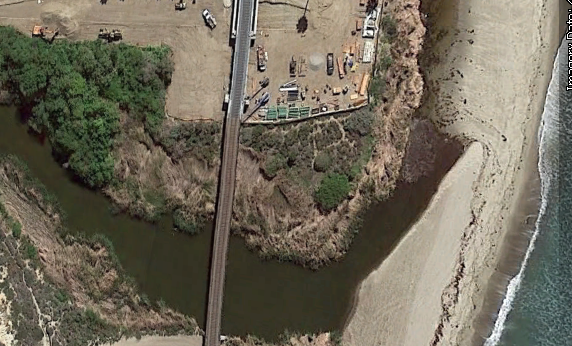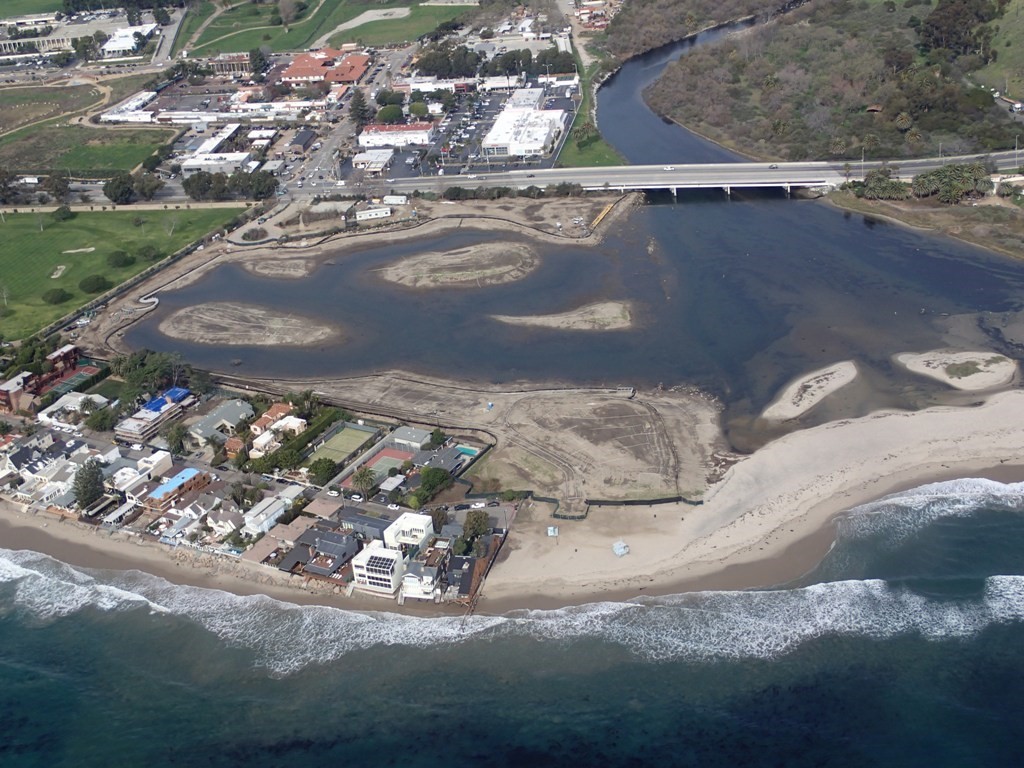Workshop highlights need for improved science to manage ‘climate-ready’ bar-built estuaries

SCCWRP in September helped kick-start a wide-ranging discussion with California water-quality and natural resource managers about how to more effectively manage a common type of coastal estuary known as a bar-built estuary that is periodically cut off from the open ocean through the natural build-up of sandy barriers.
The intermittently open phenomenon, which affects about 90% of the state’s 400-plus coastal estuaries, is intrinsic to bar-built estuaries, but the hydrologic isolation makes them particularly vulnerable to the impacts of land-based pollution and global climate change. Anytime that bar-built estuaries are shut off from dynamically mixing with the open ocean for extended periods, they can experience a precipitous decline in water quality that threatens the health of their inhabitants.
Water-quality managers commonly breach the sandy berms of bar-built estuaries to flush out these systems and boost water
quality, but this strategy is at odds with efforts to restore and maintain bar-built estuaries in a more ecologically natural state. The endangered tidewater goby, for example, is a fish that depends on the periodic closing of bar-built estuaries to complete their lifecycle.
During the workshop, held in September at SCCWRP, participants agreed that the inherent tension between water-quality goals and preservation goals for bar-built estuaries will intensify in the coming decades. Climate change is expected to trigger prolonged drought and more frequent storm surges, which will tend to strengthen the sandy berms of bar-built estuaries and keep them shut off from the open ocean for longer periods of time.
To enable managers to take a “climate-ready” approach to bar-built estuary management, workshop participants emphasized the need for improved science to inform management decisions. In particular, more ecologically relevant water quality indicators and targets are needed.
Already, researchers have begun developing the science to help bar-built estuary managers balance water-quality and preservation goals.
At the workshop, SCCWRP presented the findings of a recent study that found that bar-built estuary managers aren’t using ecologically relevant thresholds for dissolved oxygen levels in their decision-making. In fact, SCCWRP and its partners found that bar-built estuaries in reference condition failed to meet existing objectives for dissolved oxygen (DO) 26% to 60% of the time, signaling that existing DO objectives require updating to be useful in guiding management decision-making.

SCCWRP also highlighted its recently completed effort to develop macroalgal numeric targets for bar-built estuaries – an example of a more ecologically relevant indicator.
Workshop participants agreed that researchers should continue down this path, including improving on existing tools for bottom-dwelling estuarine organisms to measure overall ecological health, and using innovative modeling and conceptual frameworks to adaptively manage bar-built estuaries.
Researchers’ long-term goal is to develop a full suite of assessment tools that can help managers make science-informed decisions about how best to protect both water quality and habitat condition in intermittently open estuaries, especially in light of climate change. This management toolbox will be modeled after the robust, multi-pronged approaches developed in recent years to improve management of California streams.
For more information, contact Dr. Martha Sutula and Dr. Eric Stein.
More news related to: Climate Change, Eutrophication, Sea Level Rise, Top News